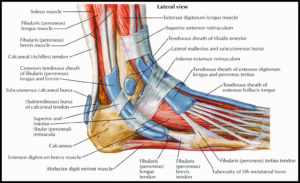Earlier this year, our team of New Jersey medical malpractice attorneys filed a lawsuit on behalf of a Passaic County woman who suffered a serious surgical injury due to the negligence of doctor who performed an unnecessary and detrimental operative procedure.
Following a foot injury, our client sought treatment from multiple physicians. She received an X-Ray and an MRI, both of which confirmed that the injury was only a strain and tendonitis. The pain continued, at which time she saw an additional podiatrist in Bergen County. This doctor reviewed the previous MRI and claimed that it showed a 100 percent tear of the right peroneus brevis tendon, which required surgical correction.
The woman, an otherwise healthy 35-year-old, then underwent surgery. Postoperatively, she suffered from severe pain, was unable to bear weight, and was left immobile. After seeking help from yet another podiatrist, this physician deemed the surgery unnecessary, and upon reviewing a more recent MRI, determined that there was no indication of a previous “tear” of the peroneus brevis tendon, but rather the impression of a surgical “cut” which would have occurred at the time of surgery. It is unclear if the surgical cut was made intentionally or unintentionally; however, the surgery did not involve any repair to the supposed “tear” of the peroneus brevis tendon, as indicated in the surgical report. In other words, our client was led to believe that she needed an unnecessary surgery that did not rectify her current condition but instead, left her severely injured.
Surgical Injuries and Medical Malpractice
In this case, the client was originally told that she suffered from a strain and tendonitis, based on the initial diagnostic imaging tests. Tendonitis is a rather common condition which occurs when the tendons in a given part of the body become inflamed or irritated. Tendons are the strong, cord-like bands of connective tissue that link muscles to bone. Tendonitis is typically caused by an injury or overuse and may occur in the foot, ankle, wrist, elbow, or other regions where tendons are located. While tendonitis can be very painful, it generally resolves in weeks or months with adequate rest and recovery.
As with most ankle injuries, tendonitis can usually be managed with the RICE treatment plan: rest, ice, compression, and elevation. Doctors often recommend nonsteroidal anti-inflammatory drugs (NSAIDs) as well to reduce pain and inflammation. After RICE, patients may undergo physical therapy to improve strength and range of motion in the affected area. On the other hand, if a person suffers a tear in the peroneus brevis tendon, surgery is indicated as a necessary intervention. If surgical repair is required, patient outcomes are overwhelming positive. Quite obviously, our client’s injury was misdiagnosed, inadequately treated, and she suffered further harm at the hands of a negligent surgeon.
What to do when a Surgical Error Leaves you Injured in New Jersey
If you or someone you love was sustained an injury during surgery and you suspect that a surgical error was involved, you may have grounds for a medical malpractice claim. In New Jersey, a valid medical malpractice lawsuit must involve an established doctor-patient relationship, an injury, and negligence on the part of a medical professional. Negligence essentially means a deviation from the established medical standard of care. When you suffer harm as a patient, the NJ medical malpractice lawyers at Fronzuto Law Group have the knowledge and experience to comprehensively investigate your case, identify any and all negligent parties, and aggressively pursue maximum compensation. For additional information and a free case evaluation, simply contact our Passaic County offices anytime at 973.435.4551.
Access the following link for additional information regarding Peroneal Tendon Syndromes Treatment & Management


